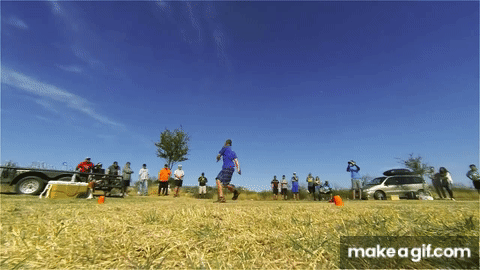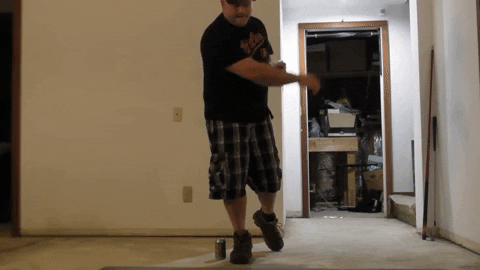I'm going to try and "undercomplicate" the brace for you. I'm going to say the same thing about 10 different ways to see if any of them "stick."
I have seen people come through here and try to break down the brace into tiny little bits and get confused and disappear. Let me know if this helps/makes sense.
Too many people who try to break it down into sequential pieces often just cause (1) hitches and jerks and (2) very frequently and related to those, collapse somewhere in the brace. I'm not talking about the value of isolating mechanics when they are wrong; I'm talking about training how leg muscles work as a unit in the brace.
What you need to know about things like crush the can and shift drills that people misunderstand is that a "prerequisite" is "athletic legs."
I like to call the whole action of the legs and brace "athletic resistance" now. If you jump up and down and resist the leg bending/collapsing, it is kinetically a kind of brace. That will transmit force much faster and stop your body mass moving too forward more reliably than collapsing anywhere in your leg.
If you run a little bit sideways and try to stop your forward momentum on a dime without letting your leg bend/collapse at impact, it is kinetically a kind of brace. If you did the same move and planted on a cloth on a hardwood floor (please only do this if you are willing to fall down lmao), you should go scooting sideways.
classic:
If you run sideways and then brace sideways with some body tilt like a skiier or seabas22 Kick the Can and then "jump back away" straight out of the move after resisting your leg bend, you just applied an overcooked brace (it's fun!).
Athletic resistance means that as soon as your leg is starting to interact with the ground, it is resisting it as a unit. It is briefly the sturdiest thing your body has ever done. Its goal is to transmit force up the chain.
If you come in with "good enough" posture and "good enough" balance you will start to get force transmission up the chain.
There are controversies going around about the exact role and sequence of the action through the hips and I pay attention to those a lot more now myself. One model (like you may have seen Kuoksa talk about recently) is the "stop model." That seems to be becoming popular in Europe. But you need to understand that the "stop" is about preventing more forward movement of the body. If it does that, and you are in good athletic movement and posture, you have a better chance of getting power into the disc and lesser chance of blowing out joints as the follow through carries the action forward safely.
A constraint on the upper bound of the function of a plant and brace and its safety under that notion is peak leg strength. Don't worry about that too much for now, but on the other hand "never skip leg day."







